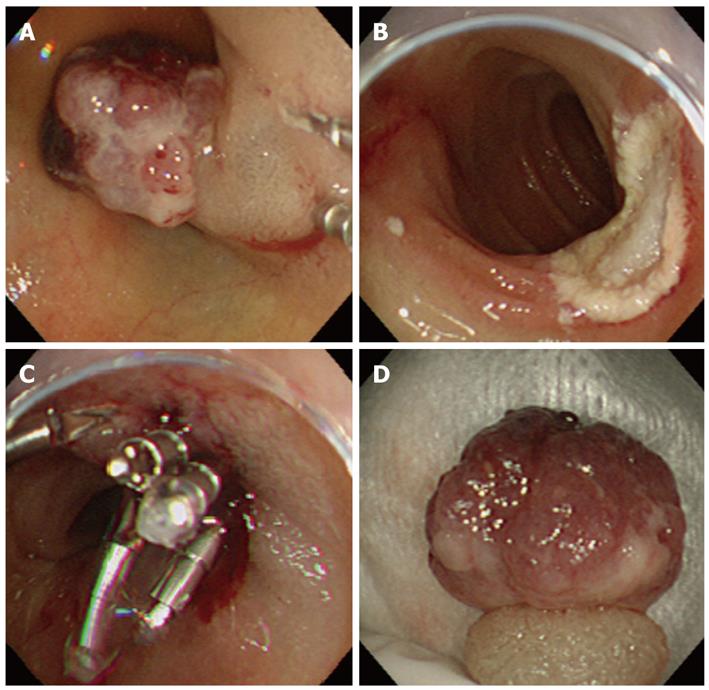Copyright
©2012 Baishideng Publishing Group Co.
World J Gastroenterol. Jun 14, 2012; 18(22): 2872-2876
Published online Jun 14, 2012. doi: 10.3748/wjg.v18.i22.2872
Published online Jun 14, 2012. doi: 10.3748/wjg.v18.i22.2872
Figure 1 A red protruding lesion (20 mm in diameter) with spontaneous bleeding was found in the superior duodenal angle.
Figure 2 A blue, nonpedunculated, submucosal tumor-like lesion.
The tumor is almost entirely covered by mucosa.
Figure 3 Duodenal hemangioma and endoscopic mucosal resection.
A: EMR was performed after the mucosa was sufficiently elevated by local injection; B: The mucosal defect; C: The mucosal defect was closed using the clipping technique, and the procedure was completed; D: A resected specimen obtained by EMR. EMR: Endoscopic mucosal resection.
Figure 4 Pathological specimen.
A: A magnified pathological image of the resected specimen (10 ×); B: A magnified pathological image of the central part of the 20 mm × 12 mm tumor, which shows proliferation of various sized capillary lumens (100 ×).
- Citation: Nishiyama N, Mori H, Kobara H, Fujihara S, Nomura T, Kobayashi M, Masaki T. Bleeding duodenal hemangioma: Morphological changes and endoscopic mucosal resection. World J Gastroenterol 2012; 18(22): 2872-2876
- URL: https://www.wjgnet.com/1007-9327/full/v18/i22/2872.htm
- DOI: https://dx.doi.org/10.3748/wjg.v18.i22.2872
















